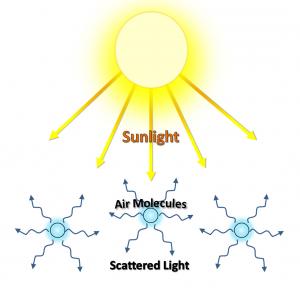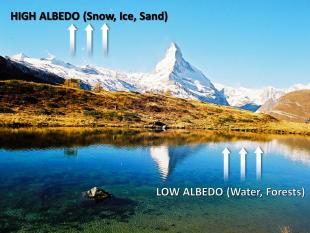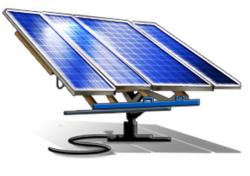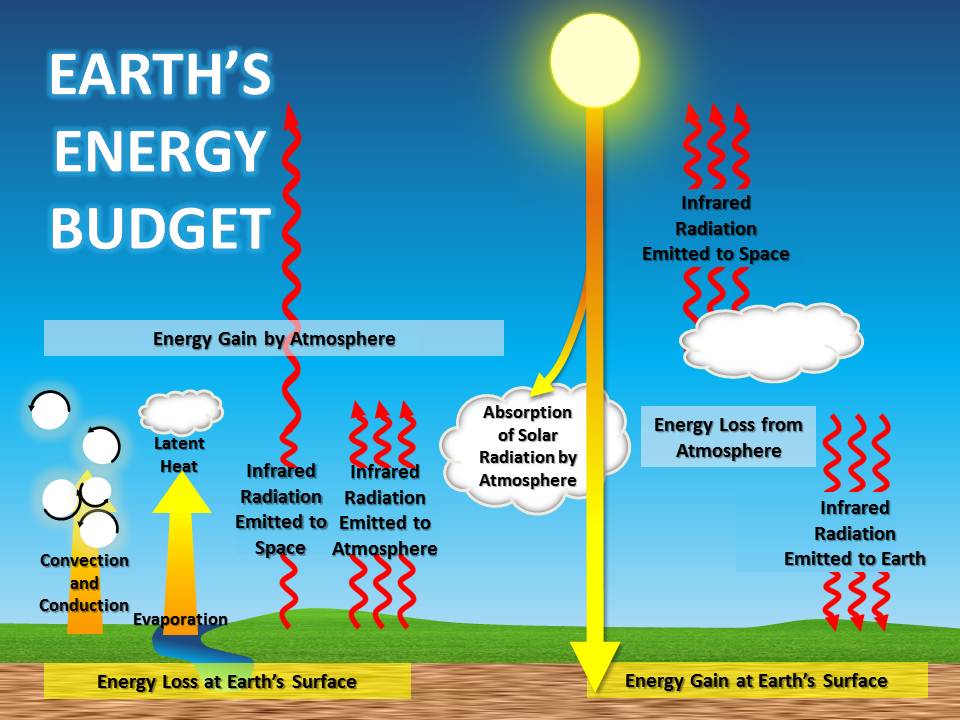Earth's Energy Balance
You have learned that Earth's surface absorbs and emits radiation at the same rate. This balance in the rate of Earth's absorption and emission occurs at 255K (-18°C or 0°F), but Earth's average temperature is actually much warmer (288K, 15°C, or 59°F). This difference can be explained when you take into consideration the atmosphere. Even though Earth's atmosphere absorbs and emits infrared radiation, it does not absorb and emit equally. Certain gases in the atmosphere absorb some wavelengths of radiation (transferring their energy into heat), while other gases are transparent and allow radiation to pass through freely, without absorption taking place. You will understand Earth's radiation balance after analyzing how the energy budget is calculated. And you will gain a better understanding of how Earth's temperature is regulated after reading the upcoming sections on the greenhouse effect.
What Happens to Incoming Solar Radiation?
The solar radiation Earth receives primarily consists of shorter wavelengths of visible light. As Wein's law explains, the sun's high temperature emits solar radiation of mostly shorter wavelengths. This incoming solar radiation may be scattered, reflected, or absorbed.

Scattering of solar radiation occurs when the radiation strikes very small objects in Earth's atmosphere, such as air molecules, tiny water droplets, ice crystals, or aerosols (tiny airborne particles), which disperse the solar radiation in all directions. Air molecules and aerosols scatter solar radiation in the atmosphere. Air molecules are much smaller than the wavelengths of visible light striking them. Therefore more of the blue, shorter wavelengths of light are scattered than the red, longer wavelengths of light. This is the reason why the sky appears blue during the daytime. Water droplets and ice crystals that make up clouds scatter light equally at all wavelengths and therefore appear white.
Reflection of solar radiation occurs when the radiation is sent directly backward from a surface. The fraction (or percentage) of radiation reflected back is known as albedo. Albedo varies greatly from one location to another on Earth, depending on the type of surface (for example, land or water), the extent of snow or vegetation coverage, and the angle of the incoming solar radiation. Glaciers and ice sheets have high albedos, reflecting 80% to 90% of the radiation reaching their surfaces. The albedo of clouds varies depending on their thickness, with an average albedo of 55%. Water reflects a small amount of solar radiation.
In Module 3, you will learn more about the albedo and the role it plays in Earth's climate system.
Absorption is different from scattering and reflection, because absorption involves more than a change in the direction of the radiation. Absorption of radiation involves the conversion of electromagnetic radiation into heat energy.
How Do We Calculate Earth's Global Radiation Balance?
What Are a Joule and a Newton?
A joule (J) is a unit of energy or work equivalent to the energy expended when applying a force of 1 newton (N) to move an object 1 meter. A joule is expressed mathematically as 1 kilogram (kg) × meter2 (m2) ÷ second2 (s2). A newton is defined as a unit of force equal to the force needed to accelerate 1 kg of mass 1 meter per second.
Earth's energy balance refers to the balance between the amount of incoming solar radiation and outgoing terrestrial radiation. In a 1-year period, the overall average flow of energy to and from Earth must balance, or the global mean (average) temperature of Earth would change. The following describes how incoming and outgoing radiation balance. The average amount of solar energy falling on one square meter of level surface outside of Earth's atmosphere is about 342 watts. A watt is a unit of power equal to 1 joule of energy per second, so radiation intensity is the rate of energy flow (joules per second) per square meter.
The following figure illustrates Earth's incoming and outgoing radiation. You will learn more about this in the next activity.




